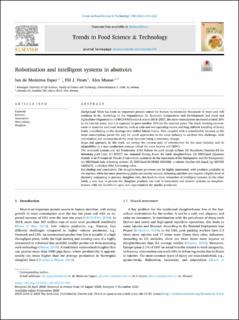| dc.description.abstract | Background Meat has been an important protein source for human nutrition for thousands of years and will continue to be. According to the Organisation for Economic Cooperation and Development and Food and Agriculture Organisation's (OECD-FAO)outlook report 2018–2027, the meat consumption increased around 20% in the last ten years, and it is expected to grow another 15% for the next ten years. The harsh working environment in abattoirs and meat factories, such as cold and wet operating rooms and long difficult handling of heavy loads, contributing to the shortage of a skilled labour forces. This, coupled with a considerable increase in the meat consumption, paved the way for novel approaches in the meat industry to ad-dress this challenge, with robotisation and automation of the meat factories being a necessary change. Scope and approach In this work, we review the current state of robotisation for the meat industry and its adaptability to a new production concept called the meat factory cell (MFC). The reviewed systems are: (a) Frontmatec AiRA Robots for pork slaughterlines (b) Mayekawa Hamdas-RX for deboning pork ham; (c) SCOTT Automated Boning Room for lamb slaughterlines; (d) SRDViand (Syst`emes Robotis´es de D´ecoupe de Viande) Z-cut robotic system to do the separation of the hindquarter and the forequarter; (e) SRDViand ham deboning system; (f) SRDViand ECHORD-DEXDEB, a robotic butcher left hand; (g) SINTEF GRIBBOT, a chicken fillet harvesting robot. Key findings and conclusions The slaughterhouse processes can be highly automated, with products available at the market, while the meat processing plants are mainly manual; deboning and fine cuts require a higher level of dexterity comparing to primary slaughter cuts, this leads to more researches of intelligent systems. In the other hand, a new way to process the slaughter products can lead to innovation and smarter systems on slaughterhouses, with the benefits to open new opportunities for smaller producers. | |
